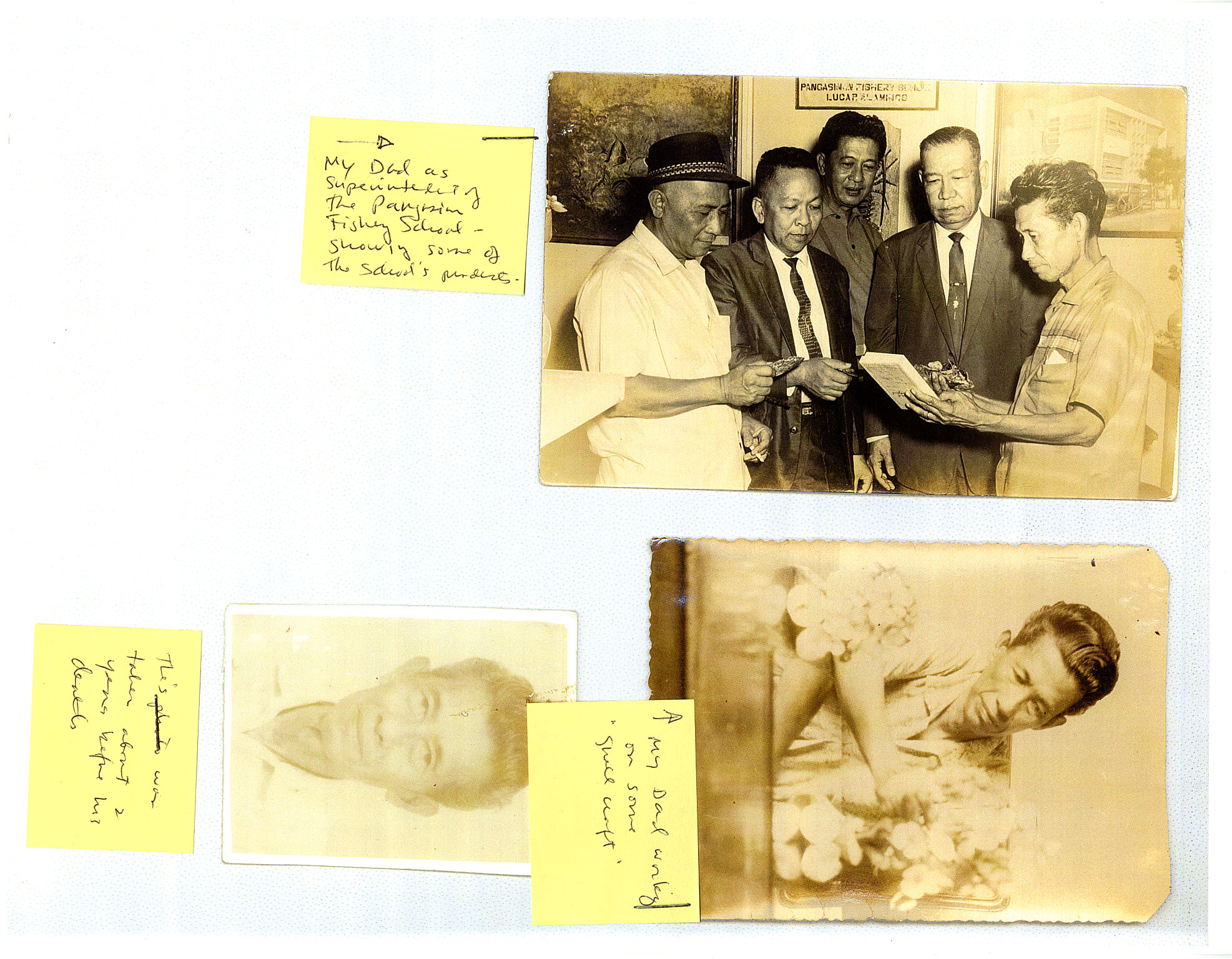For me alone,
Seeking to create what is beautiful...
Monico C. Calma
Early Life
Monico C. Calma was born in Anda Pangasinan, Philippines on May 4th, 1905. His parents Isabelo and Maria Calma were a farmer and cattle raiser, and he had two brothers and one sister. Due to the American occupation of the Philippines as a result of the Spanish-American War, Filipinos were eligible for American Citizenship. So despite being born on the islands, Monico was able to naturalize and become an American citizen. His childhood education consisted of Filipino schools under the American school system: Anda Public School and Pangasinan High School. Prior to PAFA, Monico attended the University of Washington, Seattle and the College of Divine Metaphysics in St. Louis, Missouri where he graduated as a Doctor of Psychology.
PAFA
Monico applied twice to PAFA, once in 1925 and the second time in late 1927 when he was accepted. For his 1927 application, a letter of recommendation from Philadelphia Graphic Sketch Club secretary Pauline R. Mitchell introduced him as a long time member. Additionally in 1930, Monico would apply for and attend Chester Springs.
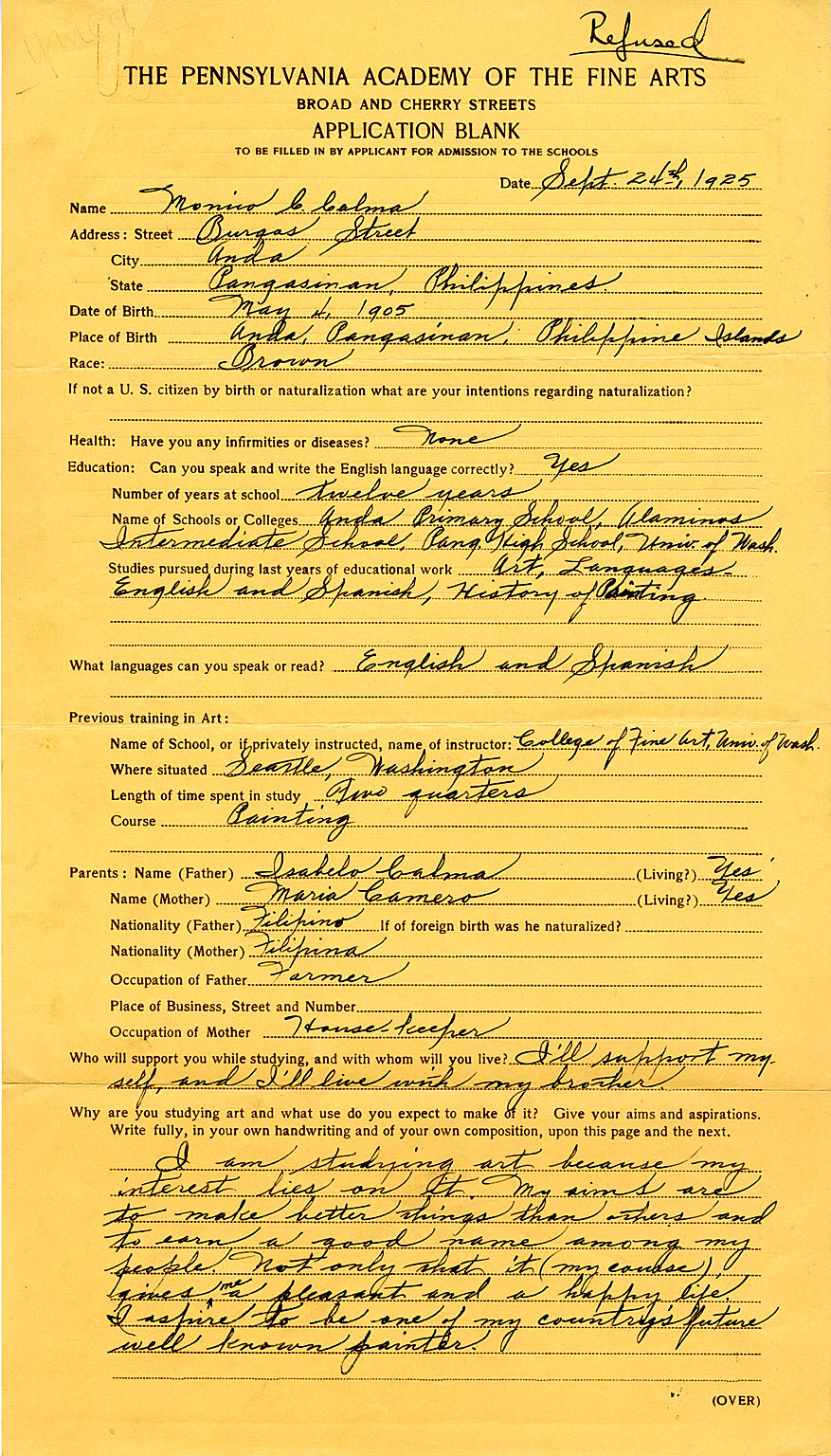
.jpg)
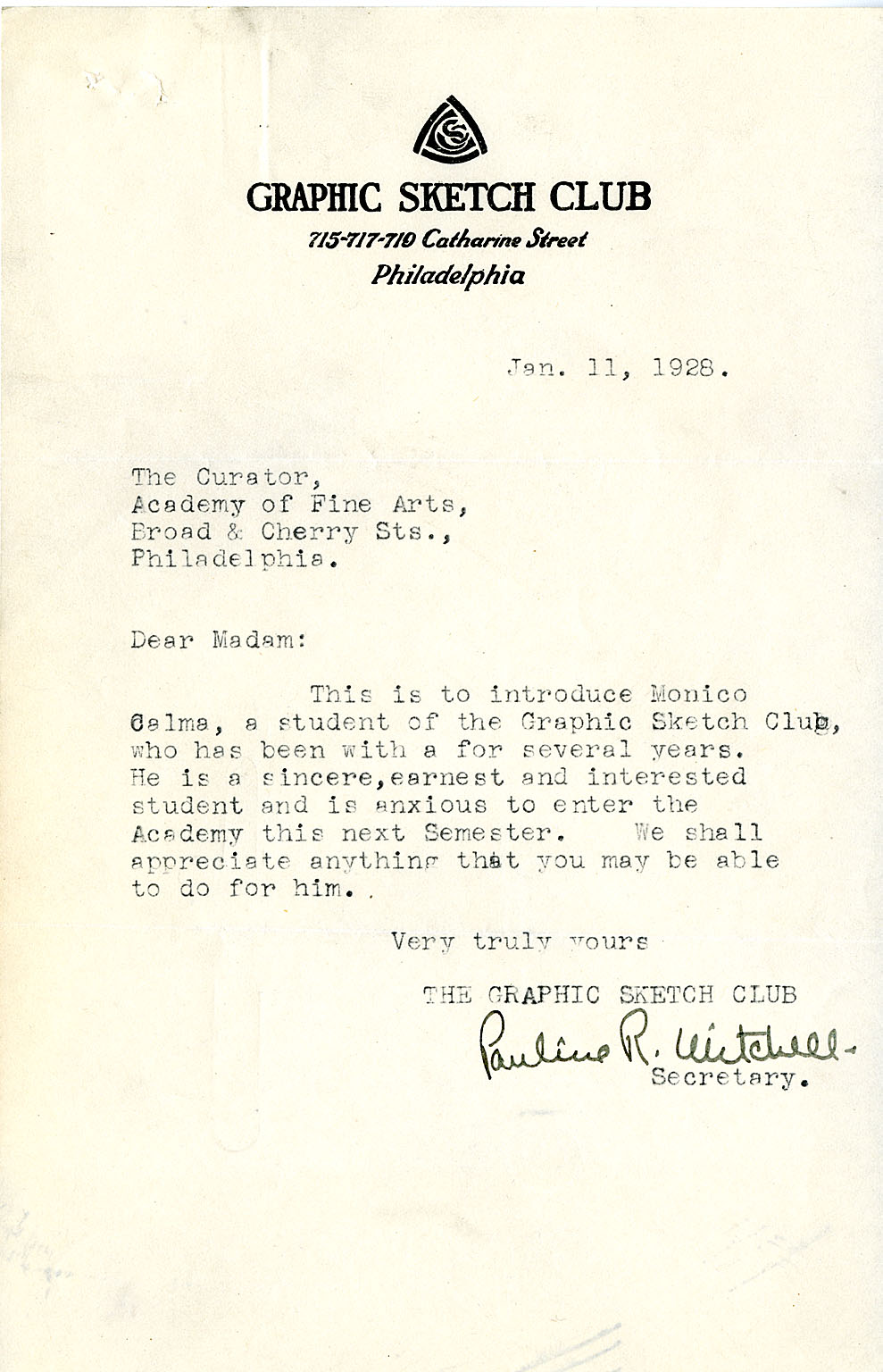
It would seem that Monico underwent a change in beliefs about art between his first and second applications. In the first, his purpose of studying art was to “make better things than others [and] earn a good name,” he also aspired to be well known in his country. From his PAFA application essay, it is clear that Monico now had a true passion, love, and appreciation for art. He dictates in stunning prose, his ideology of art, regarding it not as something to be done for fame nor fortune, but rather as an “fascinating and endless study”. He stated: “for me alone, seeking to create what is beautiful is first”.
Starting on August 12th, 1929, Monico tried to apply for a free tuition scholarship. He explained in a letter to the Committee on Written Instruction that he had been supported financially by his father and brother for three terms, but that his father was sick and unable to work or support him for the year, and that his brother needed to start paying tuition at Temple University soon. Despite working over the summer “with the greatest desire to earn [his] Academy’s year tuition” he was unable to make enough. Ultimately, Monico was not awarded free tuition for the year.
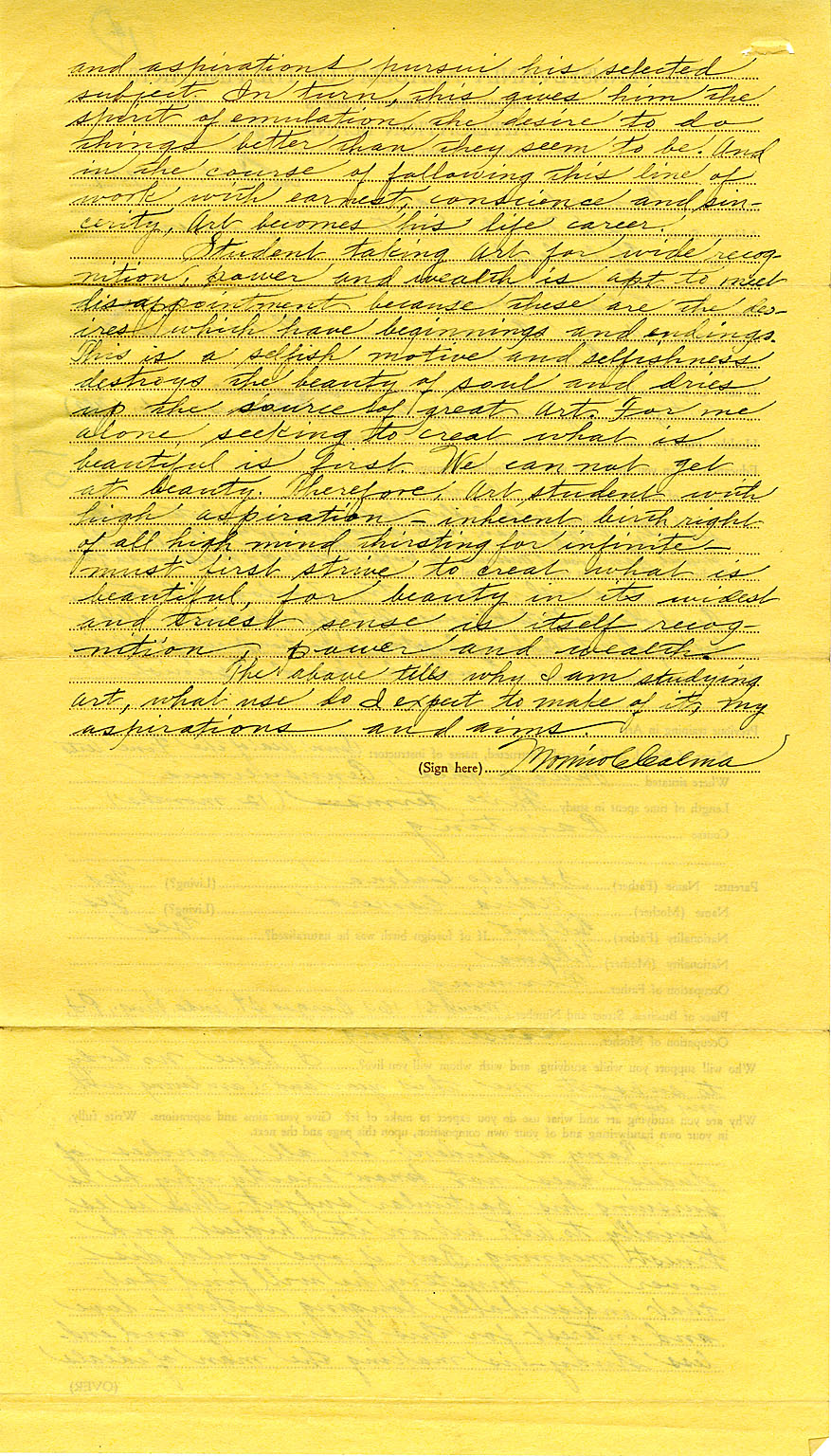
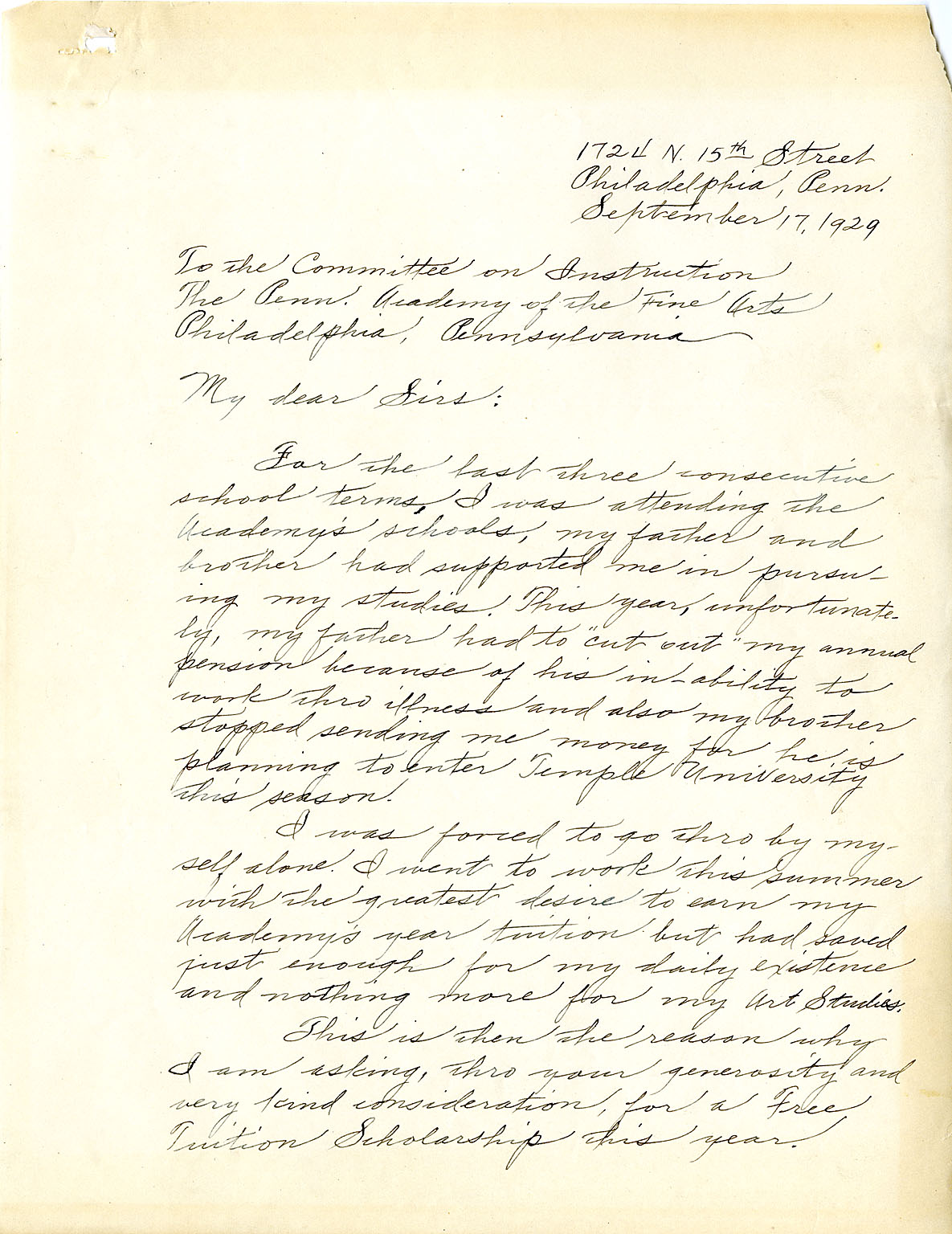
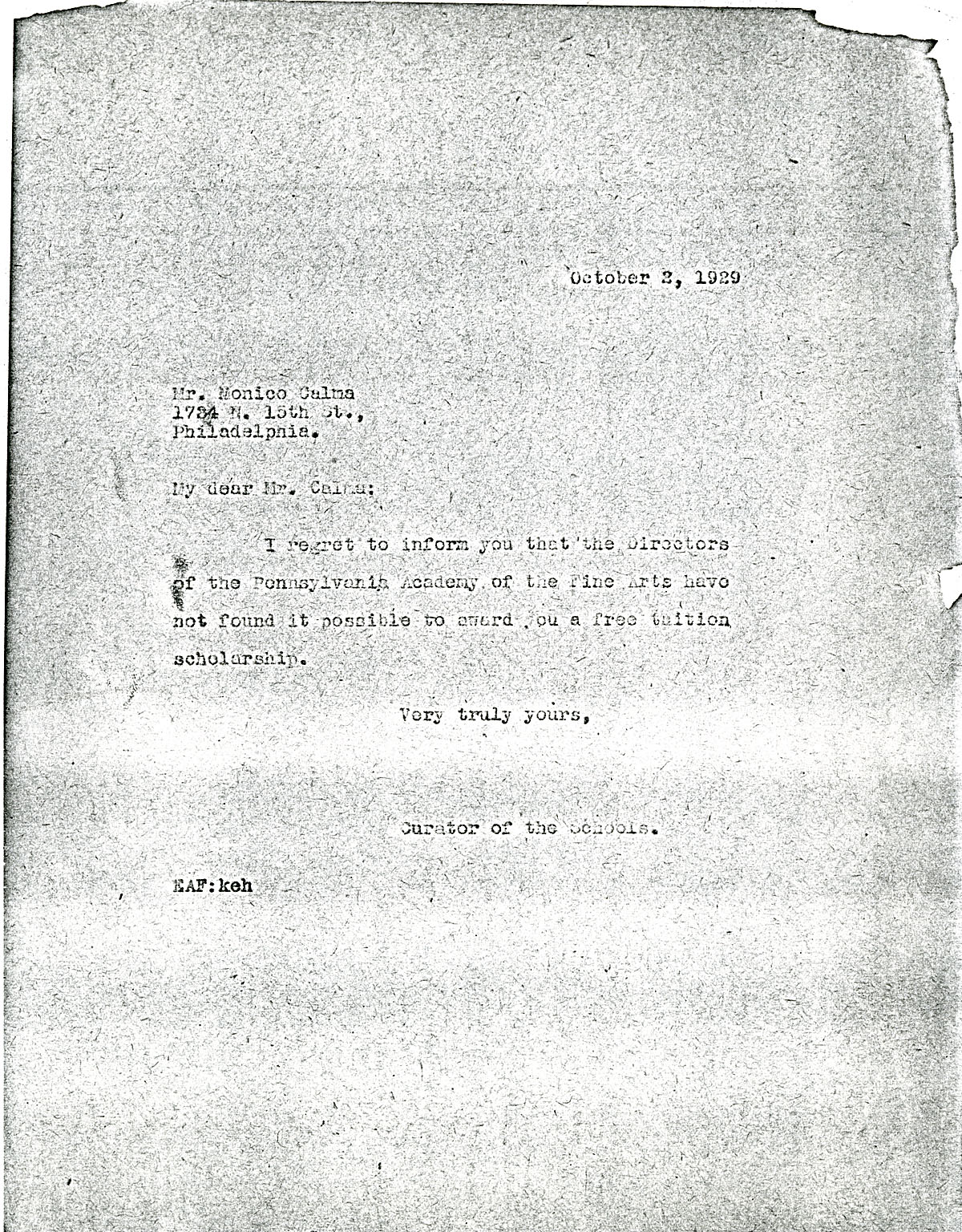
In his manuscript, Monico recalls his time at PAFA fondly. He describes his daily classes and instructional routines, pointing out the different instructors and their style of critique. A newspaper excerpt written by Monico reveals his great enthusiasm for his time spent at Chester Springs. He noted things such as “huge, well ventilated and well lighted studios, the comfortable dormitories, [and] the beautiful gardens of exquisite flowering plants”. Monico also praised the robust recreational scene amongst students and encouraging professors. Overall, Monico seemed to hold PAFA in high esteem; he honed his skills and eye for beauty, eventually earning the Cresson Traveling Scholarship in 1931. It is unknown when Monico left PAFA, but his student academic record shows his last year was 1932.
Later Life
Around 1937, Monico left Philadelphia. After World War II, Monico got back in touch with his former professor Roy C. Nuse to recount his experiences. In a letter from May 25th, 1947, he states that during World War II he had gotten married and made a living teaching art at Wespan Academy of Arts and Industries in Alaminos, Pangasinan.
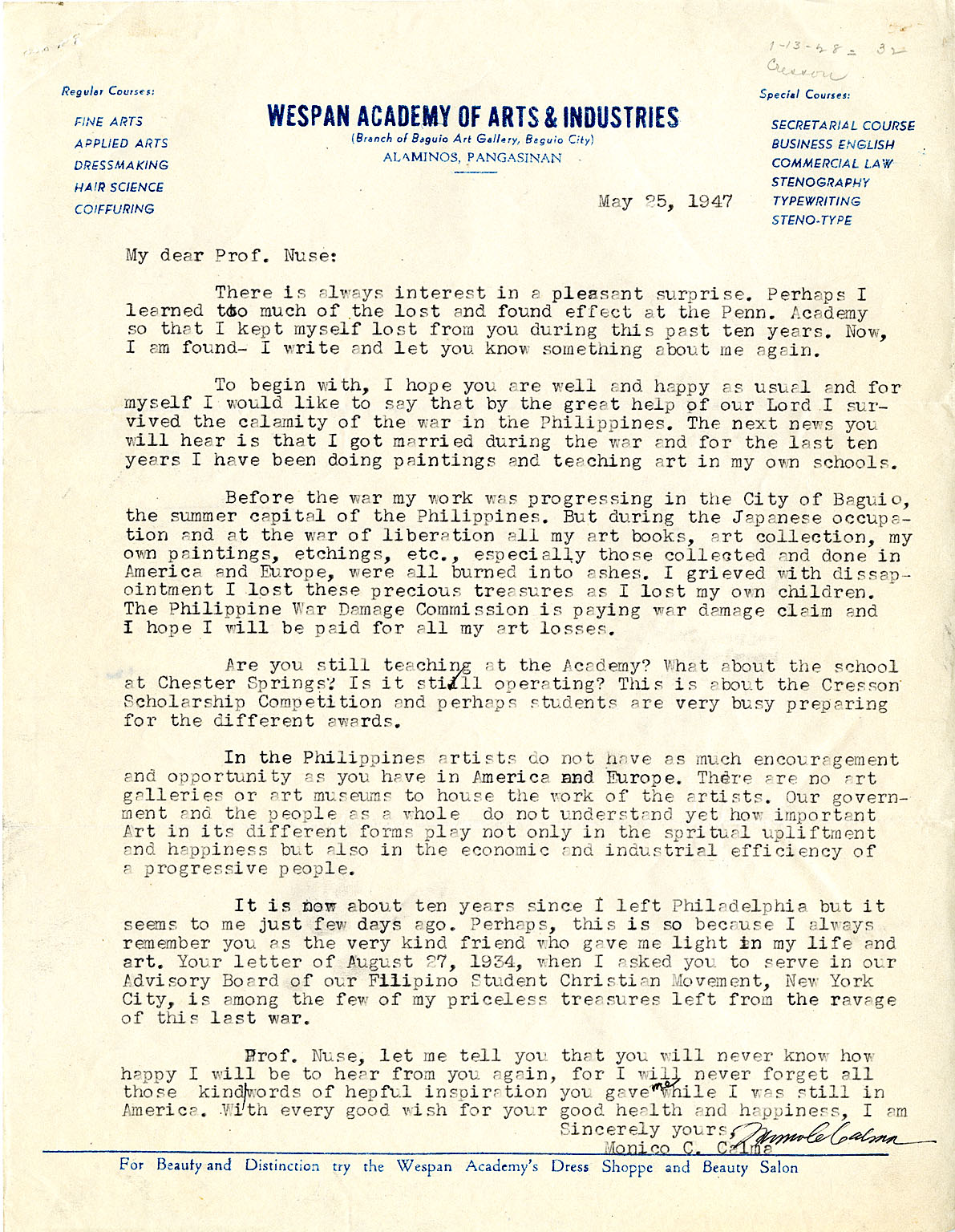
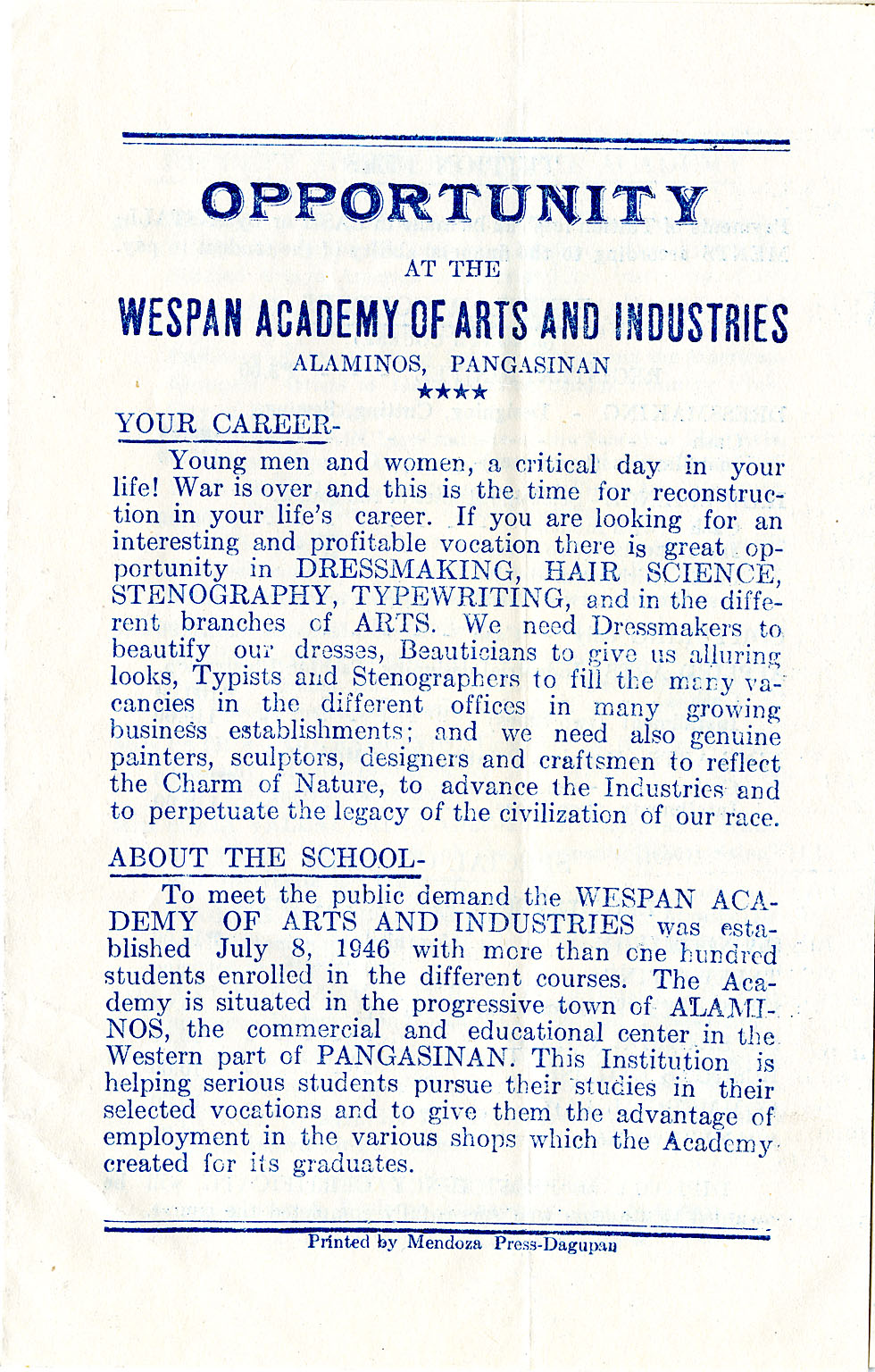
Unfortunately, Monico loss many of his personal possessions and works of art, with the exception of two paintings. His art works, art collection, and book collection were on exhibit in the Baguio Branch of the National Library; during the American liberation of the Philippines from the Japanese, bombings caused the Baguio Branch and all of Monico’s possessions housed within to burn—destroying everything on December 8th, 1941.
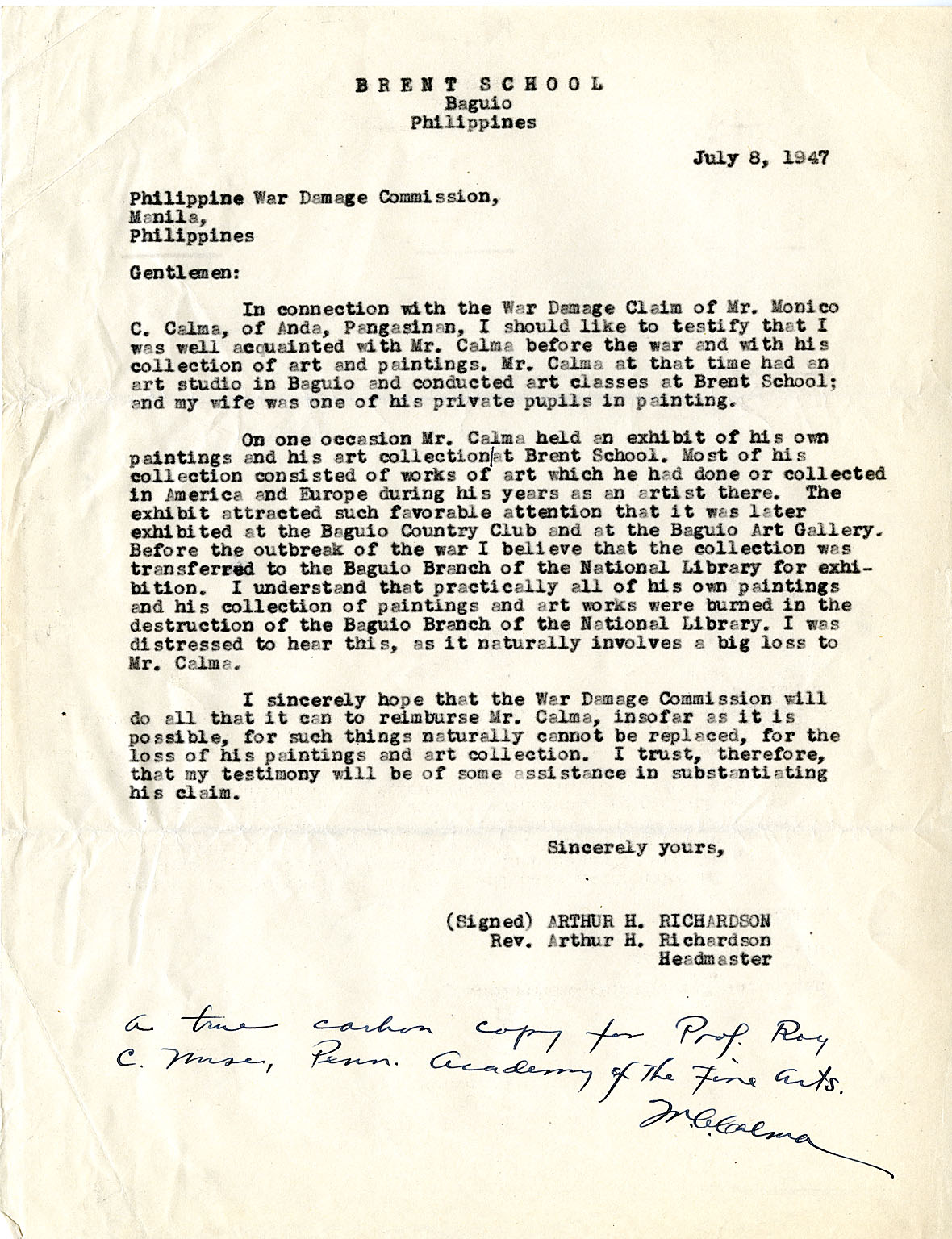
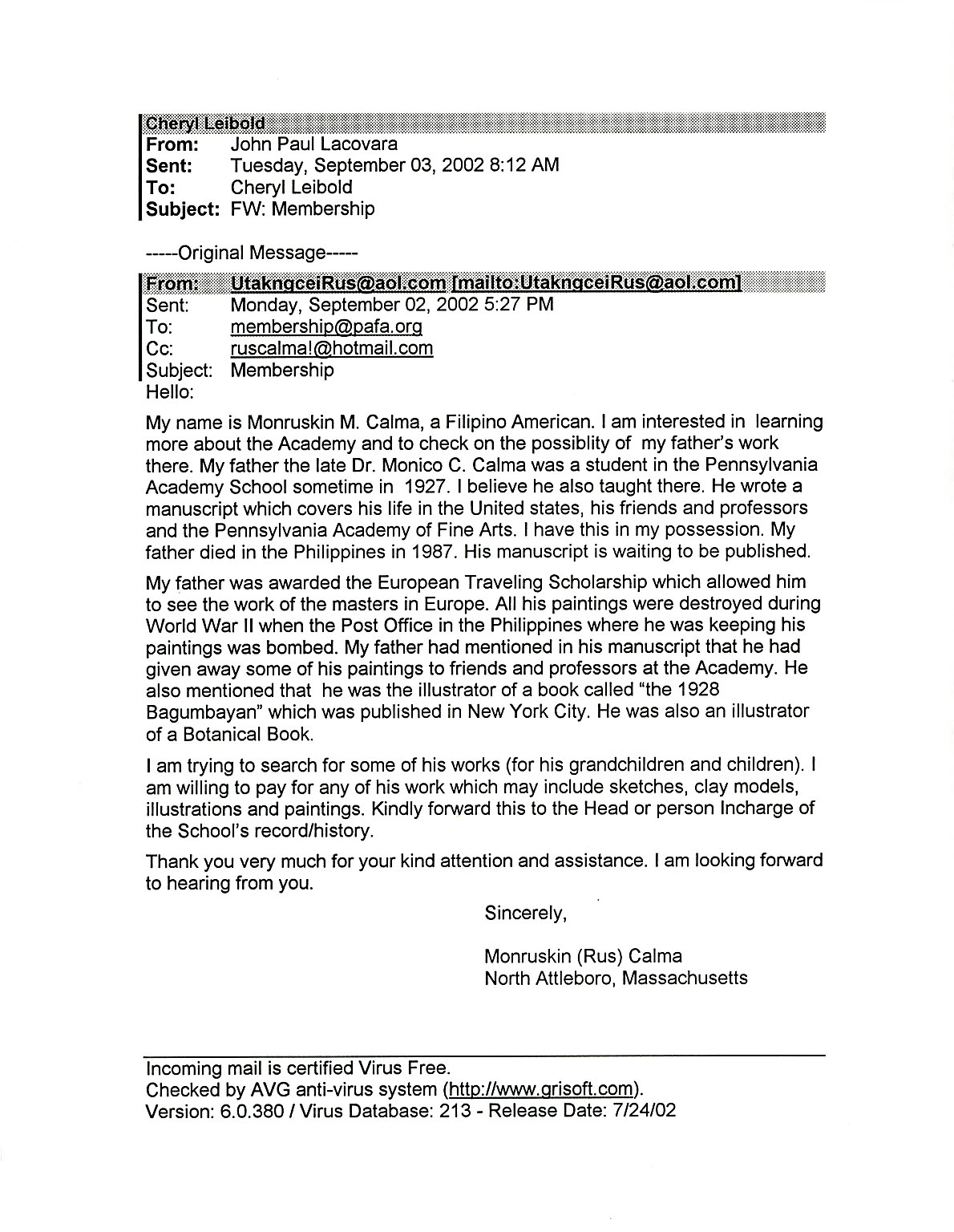
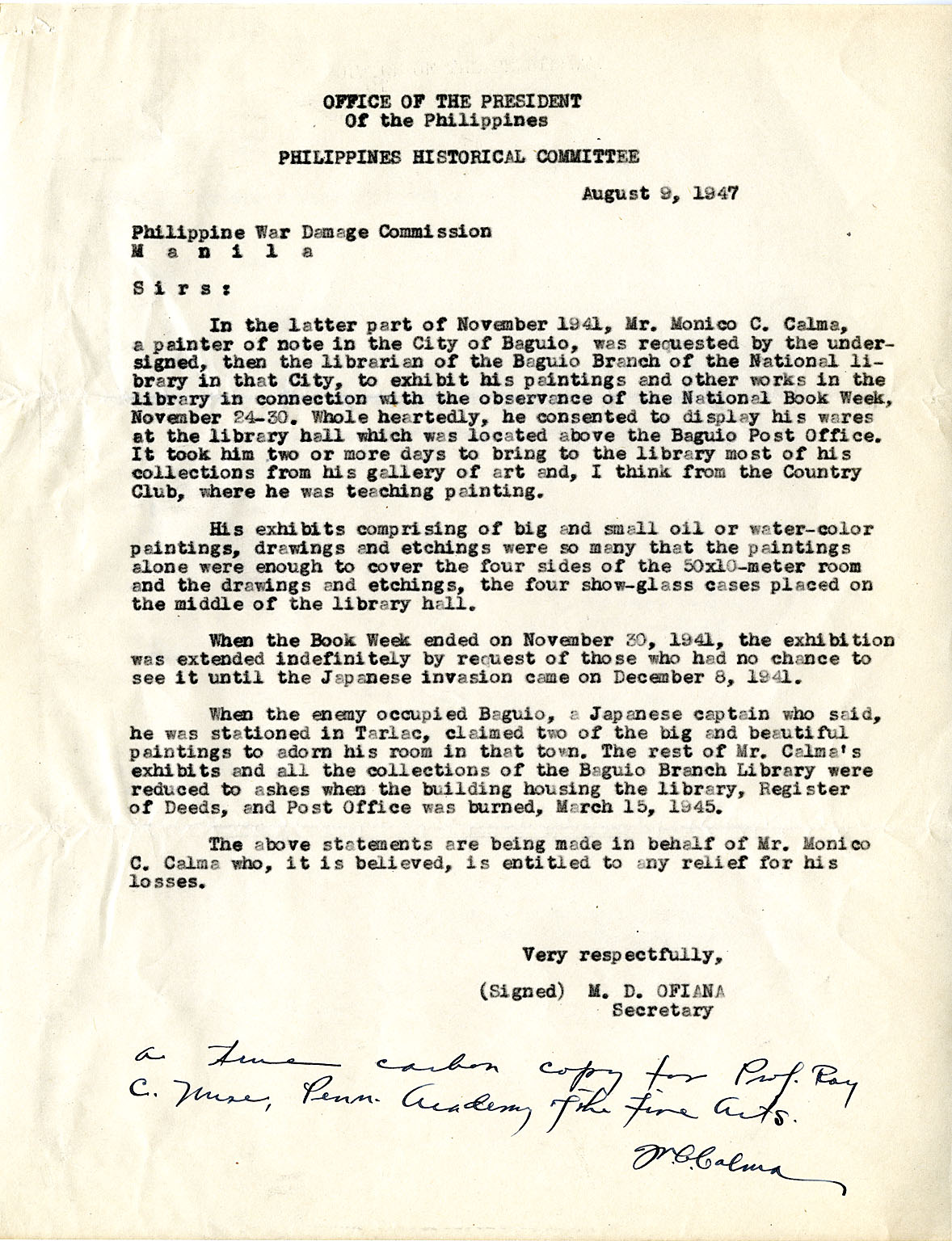
Monico was able to recuperate the financial losses of his art and collection by filing a claim to the Philippine War Damage Commission. He was awarded 3,759 Philippine pesos on December 7th of 1951. However, he still lamented at the loss of his earlier art, especially the “paintings which won [him] scholarship,” and allowed him to gain “valuable experiences [...] in Europe”.
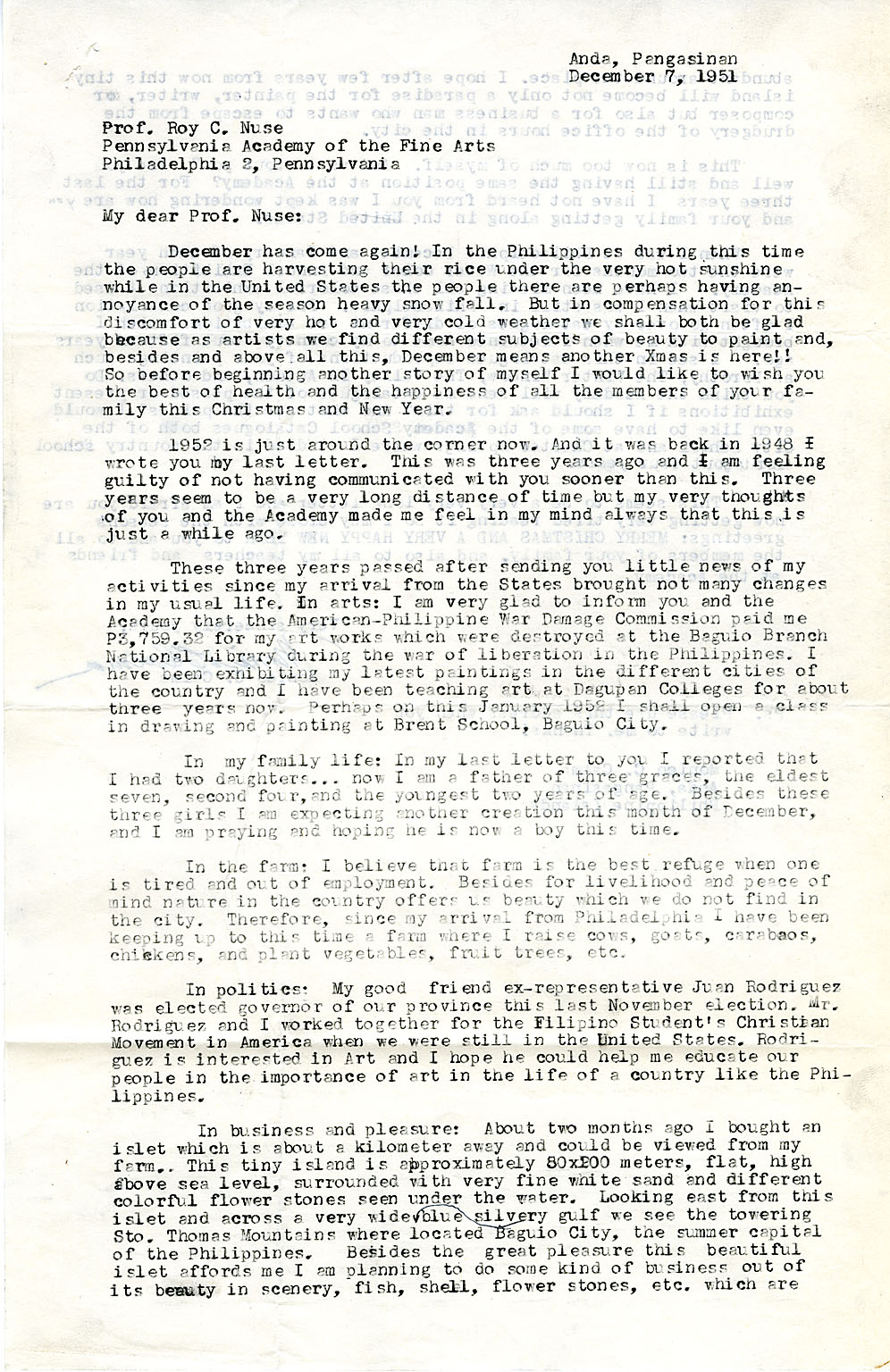
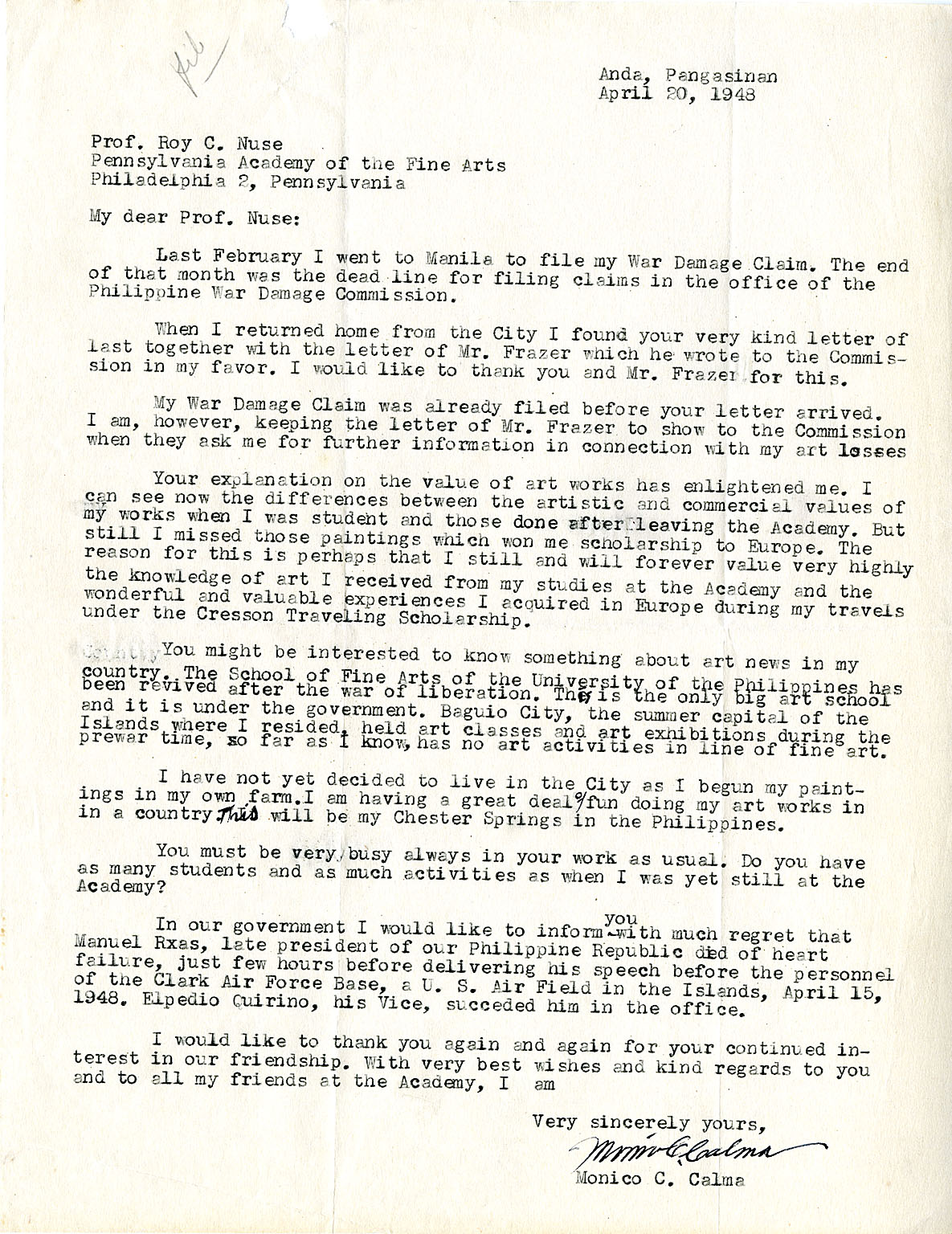
In his November 20th, 1947 letter to Roy, Monico mentions owning a farm on Anda Island where he raised livestock, farmed fruit trees, and painted. At this time he also had a three year old daughter, Linda. He mentions being the father to three girls and expecting another child in a later letter. Monico would continue to teach art at Pangasinan Provincial Fishery School, where he was co-founder and superintendent, as well as Baguio, where he would also exhibit his works in the Calma Art Exhibit. Monico died February 17th in 1987 in Baguio.
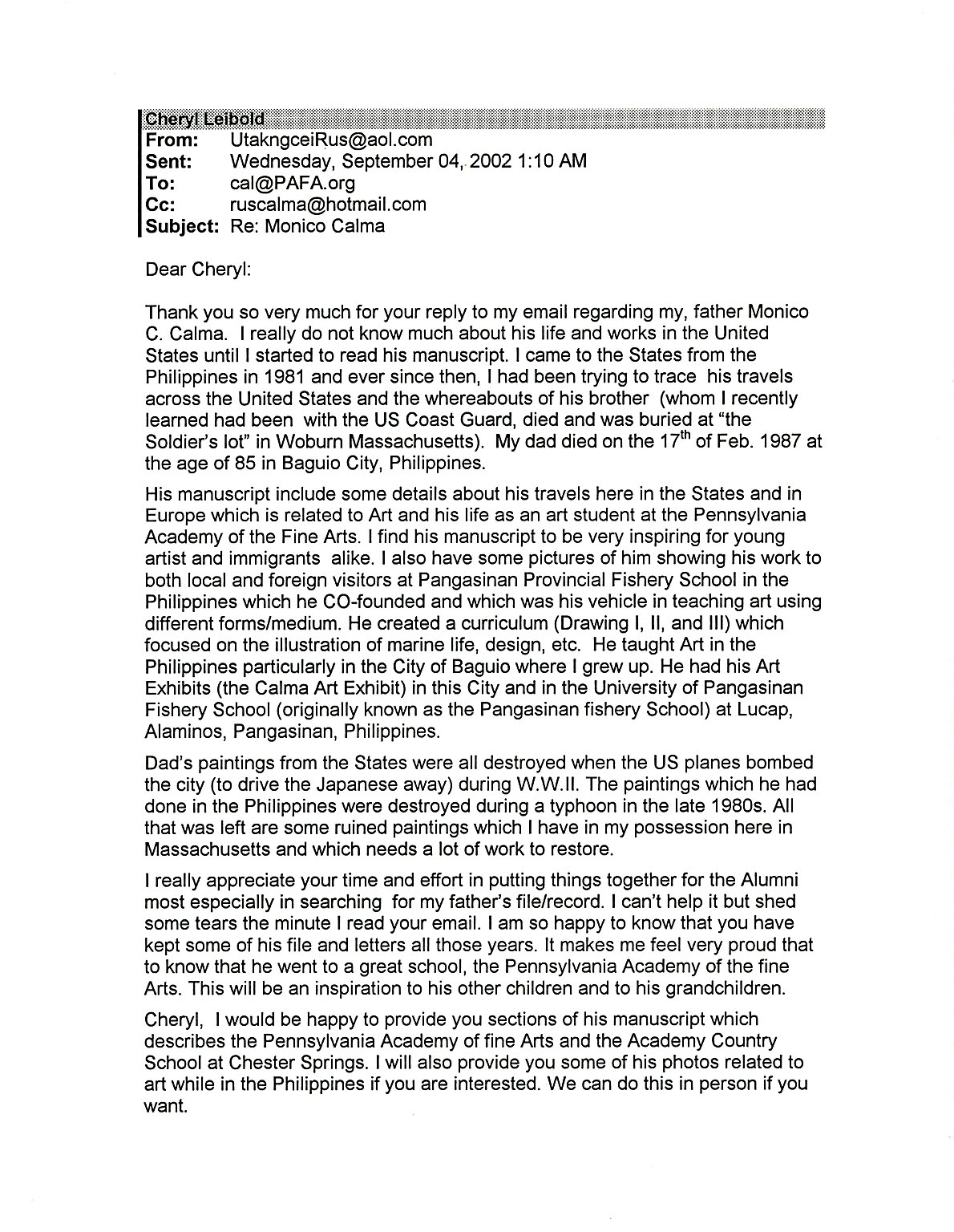
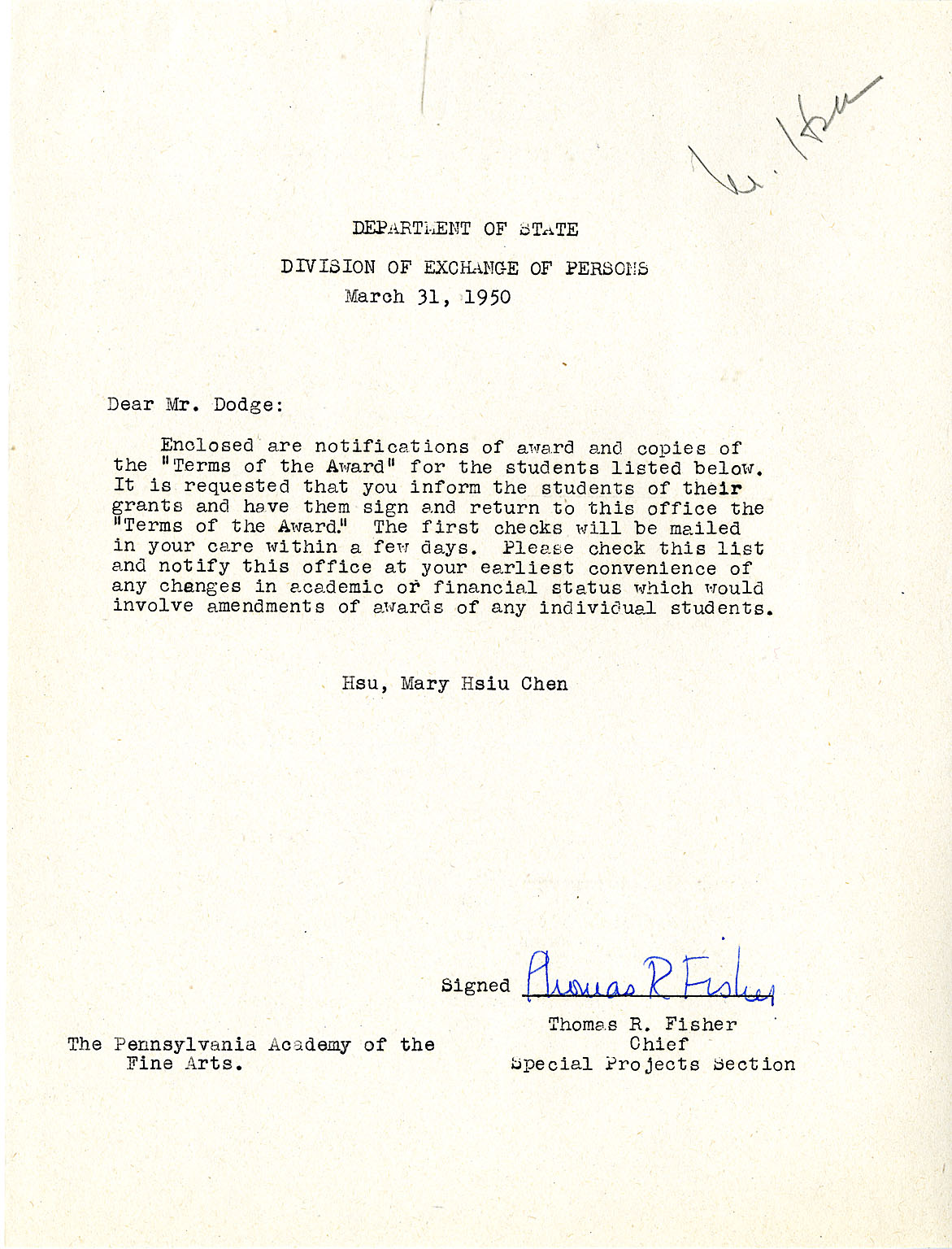
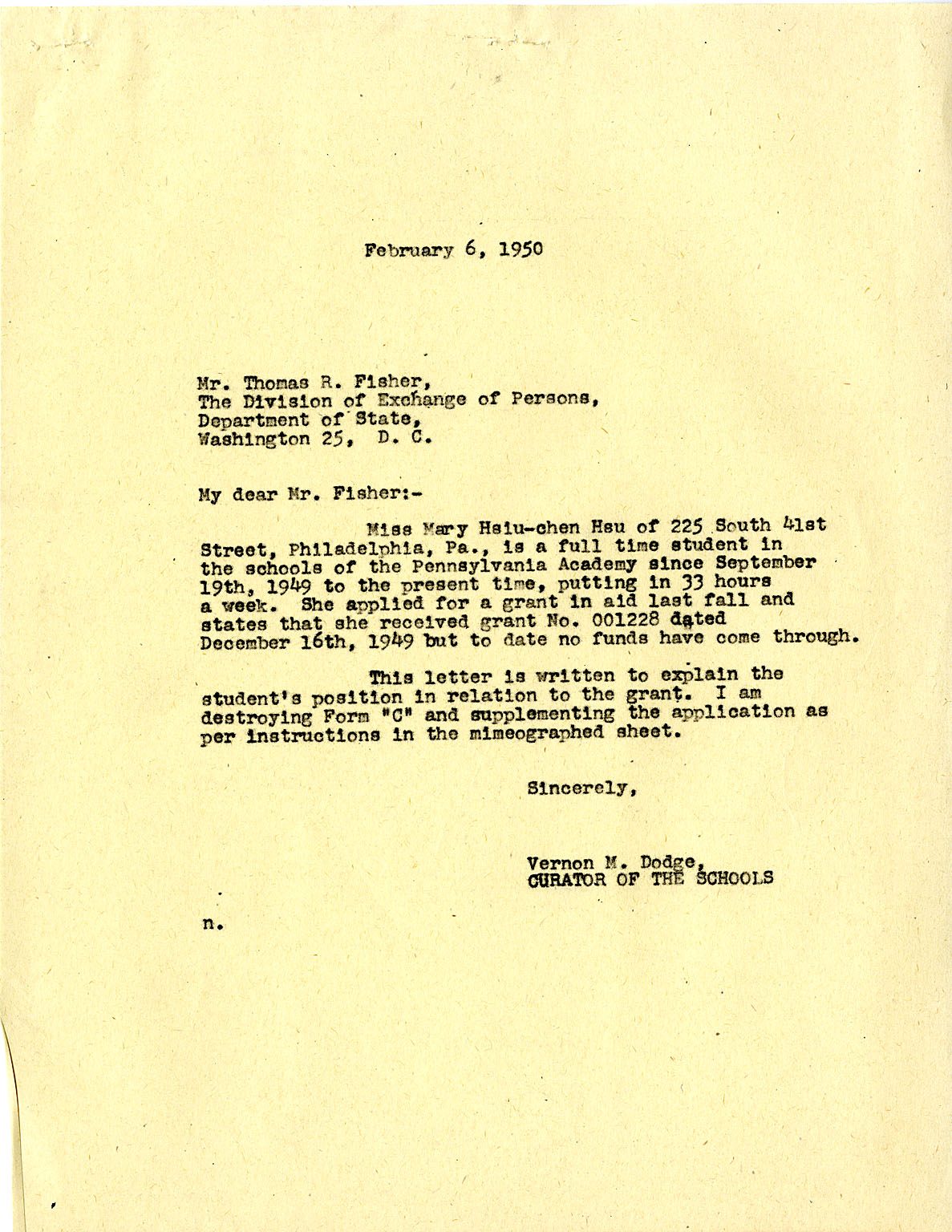
Monico’s son Monruskin Calma emailed PAFA on September 2, 2002, in hopes of locating relevant information about his father. Relaying news of his later life, alongside photographs and a scan of Monico’s manuscript.

